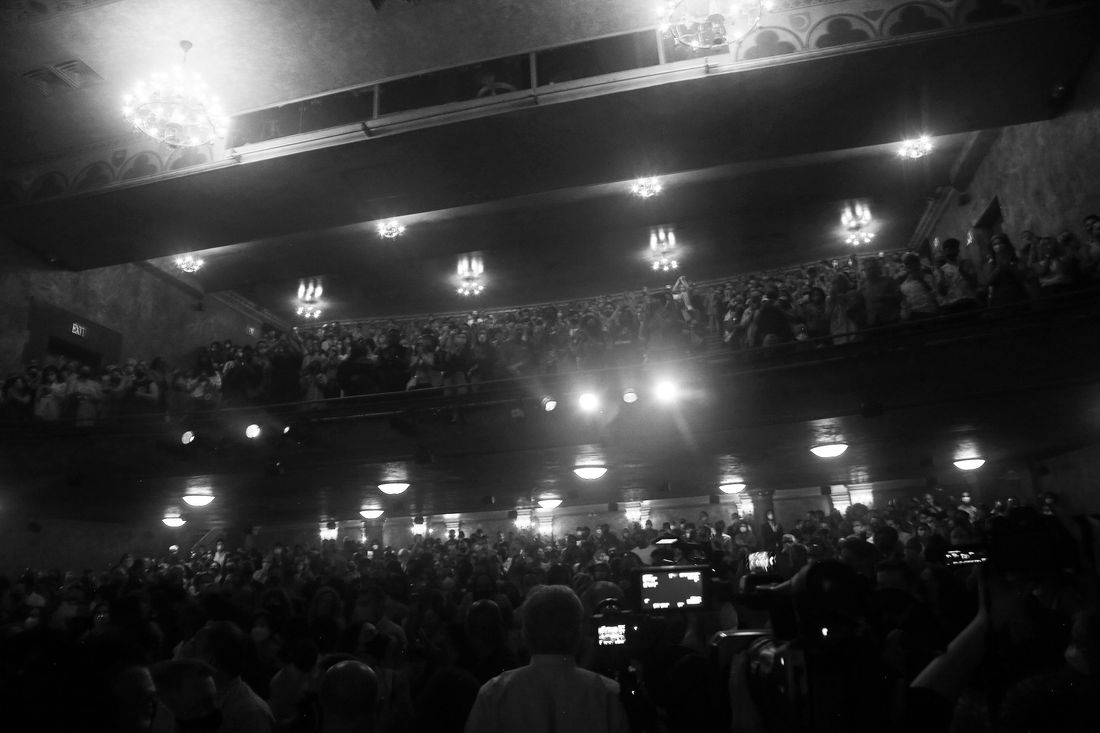
The city has been so sweet this summer, ripening on the bough with alfresco performances and pedestrianized boulevards and city-sponsored pop-up shows. Even in the still-dark places, it has been a season of sowing and watering and tending; this fall, we hope, will be the harvest. Of the 41 theaters in the Broadway League, almost every one is booked. The Theater District’s streets have lost that stunned Night of the Living Dead silence, even if the city’s financial recovery has been a little sluggish. Tourism numbers are still low, but at least the place feels full.
Autumn 2021 will be a historic season, with the customary avalanche of musicals (Mrs. Doubtfire, Company, Intimate Apparel) slowed, for once, with a wall of straight plays. With the normal rules suspended, some experimental work has actually managed to sneak uptown (Dana H. and Is This a Room), and there’s the precedent-obliterating torrent of dramas written by Black playwrights. In 150 years of Broadway, there have rarely been moments in which there were two plays by Black authors on Broadway at once; this fall, there will be seven, many of them with writers and directors and designers working on Broadway for the first time.
The past year has been a time to think critically about the structures that underlie decisions like these. One of the key lessons: Programming isn’t everything. Over the past decade, New York’s theaters have produced (somewhat) more diverse work, while the top parts of the power triangles remained essentially unchanged. Until Shanta Thake’s hiring at Lincoln Center in August, for instance, 100 percent of the big nonprofit theaters in New York had white artistic directors. The League is still overwhelmingly white, as is 100 percent of the proprietorship of those Broadway theaters. The big commercial-theater owners (the Shubert Organization, the Nederlanders, Jujamcyn, Ambassador Theatre Group) are like the house in Vegas — whether a show wins or loses, the landlord still gets paid. Look closely and you’ll notice that those Black writers are mostly signed up for limited runs. Antoinette Chinonye Nwandu’s Pass Over will play only nine weeks and close on October 10. The ought-to-be-a-classic Trouble in Mind will close on January 9. Five of the seven plays from this Black Renaissance wave are scheduled to be gone by early January. Is Broadway turning over a new leaf? Or is it hedging against uncertainty, assuming that “sure bets” — like Hugh Jackman in The Music Man — will swan in at the end of the year?
But even the sure-bet shows are iffy in this fearful maybe-twilight of the virus. Every revelation about the Delta variant and our national response has sent optimism reeling. (One fall show, Annie Baker’s Infinite Life, has already been postponed, only nine days after its opening date was announced.) In London, large theaters opened for full audiences in July, only for several to close quickly as COVID crept in the stage door. The start-and-stop has proved far more expensive than simply staying closed had, and producers there are in a panic. Andrew Lloyd Webber says he may have to sell his West End theaters because of his losses. I mean, don’t cry for Andrew Lloyd Webber, but disasters at the top don’t “trickle down” in the artistic economy — they smash down, cracking through the layers of interdependent, vulnerable ecology below them. (When the highest Broadway salaries disappeared in 2020, the Actors’ Equity health-insurance fund was drained, affecting actors and stage managers everywhere.) The known costs go into the billions. In May, there were only about half as many arts jobs in New York as there had been before the shutdown. Grants meant to stanch the bleeding have been slow to disburse. There are hidden losses, too, though difficult to quantify — the artisans who found other work, the graduating classes that came into a nonexistent field, those who simply left, those who died.
For art to return to pouring money into the state treasury, something must ease the art-makers’ way back. In May, Mayor de Blasio announced a $25 million get-artists-to-work program, which will deliver some direct, artist-centric relief. It is both heartening and a drop in the bucket. That recovery depends too on the theater they can come back to. The onetime Moulin Rouge! star Karen Olivo has publicly objected to returning to Broadway because of the sector’s disregard for performers’ well-being. She advocates for withholding one’s talent until the form can be fixed. Saying no to self-destructive work has been a theme of summer 2021. Even in theater, the pride-in-resilience, show-must-go-on attitude has started, at last, to be paired with other questions: Whose show? Why must it go on? Last year’s waves of reckoning revealed the shoddiness at the heart of the American theater system: baked-in racism, pay scales that undershoot the cost of living, and a rigid gerontocracy. That’s why even a beautiful and much-longed-for fall season makes some folks feel a little cautious.
But there has been some good news! The shutdown paradoxically empowered the labor sector. The pause freed workers from their 80-hour weeks, giving the unionized, the nonunionized, and even the unpaid time to organize. Unemployed actors turned themselves into lobbyists, helping to secure federal aid for the field at an unprecedented level. Exploitative systems were confronted in the public square — and in many cases, labor seems to have won. The Metropolitan Opera locked its stagehands out … and eventually capitulated. Sound engineers walked off the job during a thunderstorm in Williamstown, winning new salaries and protections. The producer Scott Rudin took a “step back” from his dominance on Broadway after his assistants went on the record to recount decades of his cruelty and abuse. And organizations that started in the shutdown have been working on cementing new practices. The Broadway Advocacy Coalition provides workshops to Broadway shows on how to create equitable, safe, and anti-racist work spaces; Black Theatre United just released what it’s calling a New Deal for theater, a statement of standards for inclusion worked out with many of the industry’s heavy hitters.
That level of empowerment and awakened consciousness won’t appear on a marquee, but it will determine what we see. Both the Classical Theatre of Harlem and the National Black Theatre are building new spaces that should expand their cultural footprint. There’s a leadership shift afoot Off Broadway as well: Artistic director John Doyle is leaving Classic Stage Company; artistic director Jim Nicola has announced his coming retirement from New York Theatre Workshop (the organization that launched Rent, Hadestown, What the Constitution Means to Me, and Slave Play); and while the longtime head of the Public Theater, Oskar Eustis, isn’t leaving, he has announced a new, more horizontal method of power sharing. Murmurs from up and down the city hint that other changes are coming.
So the theater is trying to rebuild itself into a more ethical shape, even as it’s trying to rescue itself from its greatest existential crisis. Thank goodness it’s a form accustomed to starting fresh with every show. But the audience also has its own work to do. Here in September, as everything is beginning to change, we are going to have a strange moment of privacy. For once, we are entering a season that is, mostly, just for New Yorkers. Since tourism won’t be back to normal for a couple of years, the tickets New Yorkers buy, the shows New Yorkers support — those will be the ones that succeed. Do we attend the flashy show that charges more than $400, or nah? Are we excited by the new young writers? Or are we going back to the old chandelier-swinging workhorses because it turns out we missed them? Do we value thought? Or technical wizardry? Or a tune? I’ve never actually experienced a New York theater that wasn’t distorted by the pressures of the tourist trade, and I’m eager to see what we can make of it. Even though we’re still all a little frightened, there’s a banquet laid out. So what do we want?


